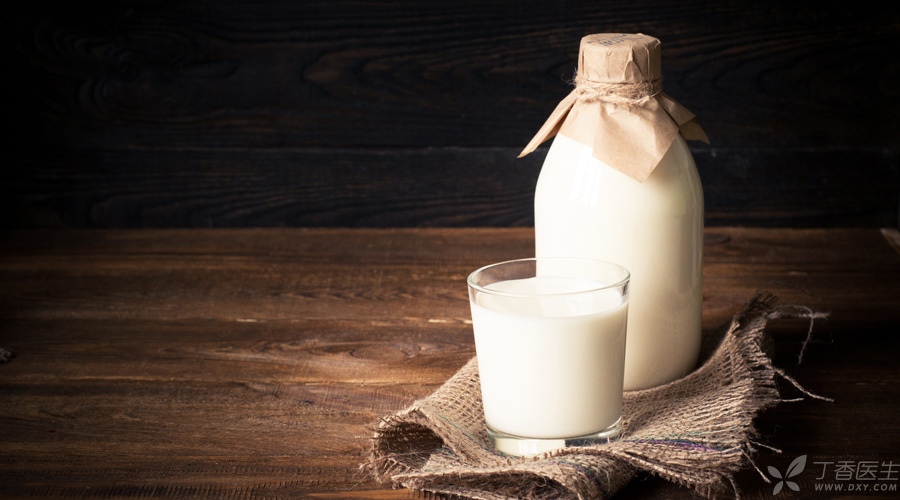
As for milk yogurt, all kinds of rumors have never stopped.
This is not, there is another piece of news on the headlines:

At that time, the people shouted [poignant food safety] [why is it so difficult to drink milk in China]…
The author really can’t look down on it any more. Let’s talk about the main character of this incident-[reconstituted milk].
What is reconstituted milk?
Reconstituted milk is a dairy product that reduces concentrated milk (such as condensed milk) or milk powder to liquid milk by adding a certain proportion of water or milk.
In short, it is a process of concentrating milk and then reducing it to liquid milk.
Reconstituted milk is not a what [inferior product], but a regular product allowed by the state, provided that the manufacturer clearly indicates the word [reconstituted milk] on the product packaging.
In accordance with State regulations:
Yogurt, sterilized milk and other dairy products can use reconstituted milk as raw material, but pasteurized milk cannot use reconstituted milk as raw material.
In other words, the raw material of pure milk sold in supermarket freezers cannot be milk powder.
However, manufacturers can use milk powder as raw materials for normal temperature milk, yogurt and various kinds of prepared milk (such as some breakfast milk and banana milk).
For example, reconstituted milk yogurt, in short, is to brew milk powder with water to form milk, and then inoculate lactic acid bacteria to ferment into yogurt.
Why not use fresh milk directly as raw material?
Very simple: because it is cheap and convenient.
Compared with fresh milk, milk powder does not need cold chain storage, is easy to transport and store, and is more conducive to the cost control of manufacturers.
If you pay attention, it is not difficult to find that [reconstituted milk] yogurt in supermarkets is often cheaper than [raw milk] yogurt.
Is reconstituted milk nutritious?
What everyone is most concerned about is the nutrition of reconstituted milk.
In the production process, reconstituted milk needs to be converted into milk powder (sterilized at high temperature), then reduced to milk liquid by adding water, and then sterilized at high temperature before it can be filled out of the factory through aseptic process.
Compared with pasteurized milk, it is heated more times, for a longer time and at a higher temperature. Therefore, the loss of nutrition will naturally be more, mainly some heat-sensitive vitamins, such as vitamin B1 and vitamin B6, but the loss ratio is generally not more than 30%.
However, what I want to tell you is:
We don’t have to care about such nutritional loss at all.
Both milk and yogurt are only part of our daily diet. We drink milk mainly for the protein and calcium in it.
Neither of these two core nutrients will be affected by high temperature.
1. Protein: There is no nutrition when denatured at high temperature? Nonsense!
If this is the case, we can only drink blood and eat raw meat every day. After all, when the food is cooked, the protein will denature.
In fact, heating changes the structure of the protein and will not hinder the digestion and absorption of amino acids by the intestinal tract.
2. Calcium: Inorganic salt, properly not afraid of heat.
As for the loss of B vitamins, it is not a pity that the amount of B vitamins in milk itself is very small. What’s more, supplementation of B vitamins is not the job of milk. Cereals, bean products and meat are the dietary sources of most B vitamins.
The problem of [reconstituted milk] is the problem of honesty.
Speaking of which, you should also understand:
[Reconstituted Milk] is not [without nutrition], nor is it [inferior product], and we do not need [vigilance] reconstituted milk at all.
There are so many rumors in the circle of friends, which are nothing more than malicious marketing by dairy competitors, or hype and powder-raising methods by [pseudo experts] [marketing numbers].
However, reconstituted milk is different from fresh milk in terms of production process and taste. Therefore, the national standard clearly stipulates:
The words [reconstituted milk] shall be marked on the product packaging, and the raw materials and proportion of reconstituted milk or milk powder shall be truthfully marked in the product ingredients.
Since milk powder has been used, manufacturers should write it out gracefully. There is really no need to hide it, let alone deceive consumers into saying it is fresh milk.
Even, there are still some products on the market. The ingredient list uses [milk powder], but the package is not marked [reconstituted milk].
Although there is no food safety problem, it is an illegal act that ignores consumers’ right to know.
Can I buy reconstituted milk?
Of course you can buy it!
For milk, as long as it is pure milk without sugar, it is good. (However, frankly speaking, most [reconstituted milk] milk has extra sugar and is not recommended.)
For yogurt, when selecting, one should look at the sugar content and the other at the taste. As for whether it is [reconstituted milk], there is really no need to struggle ~
